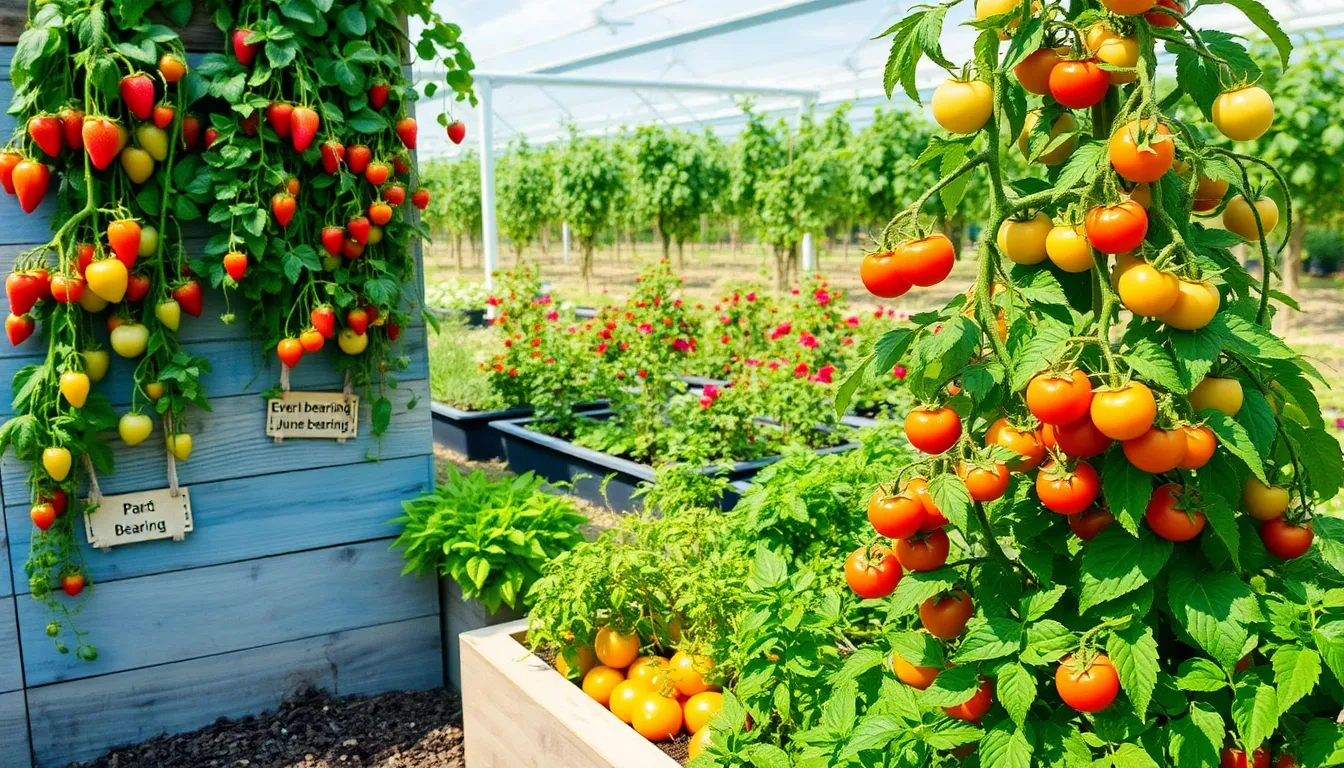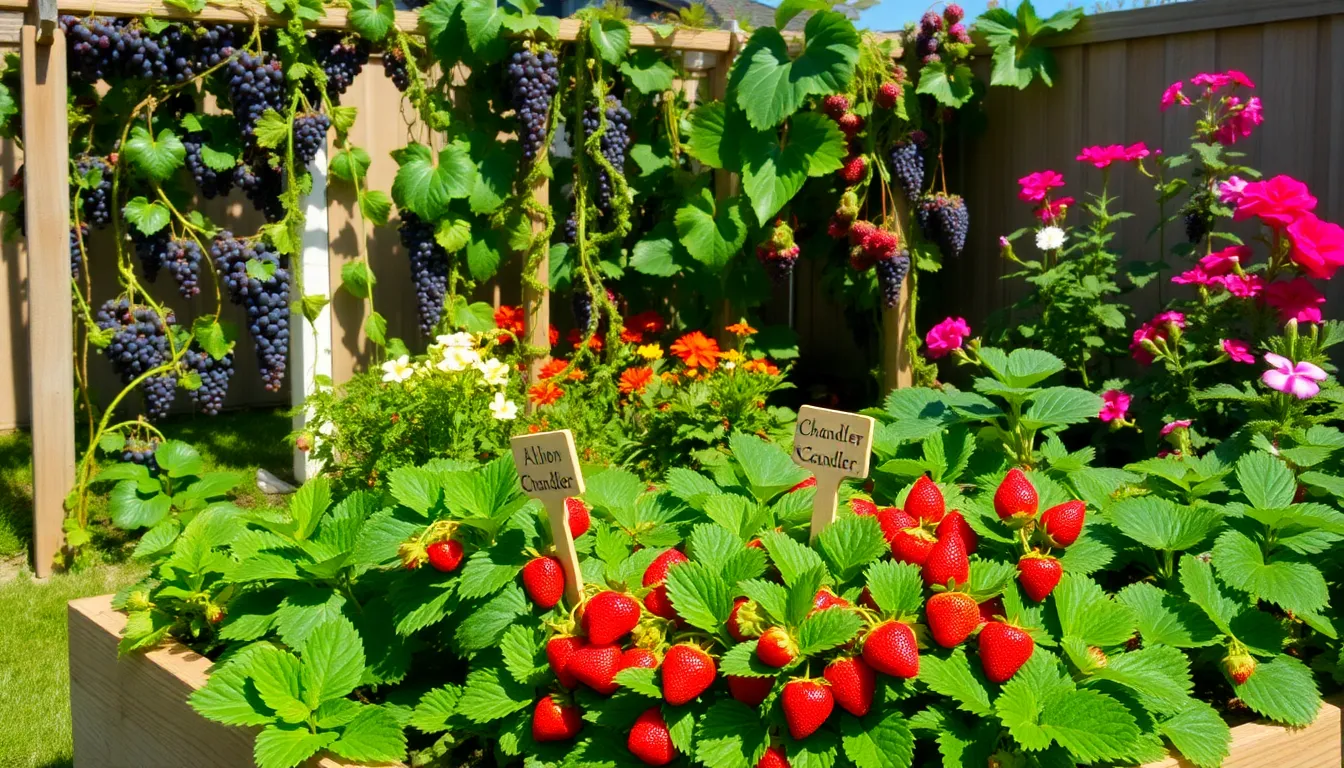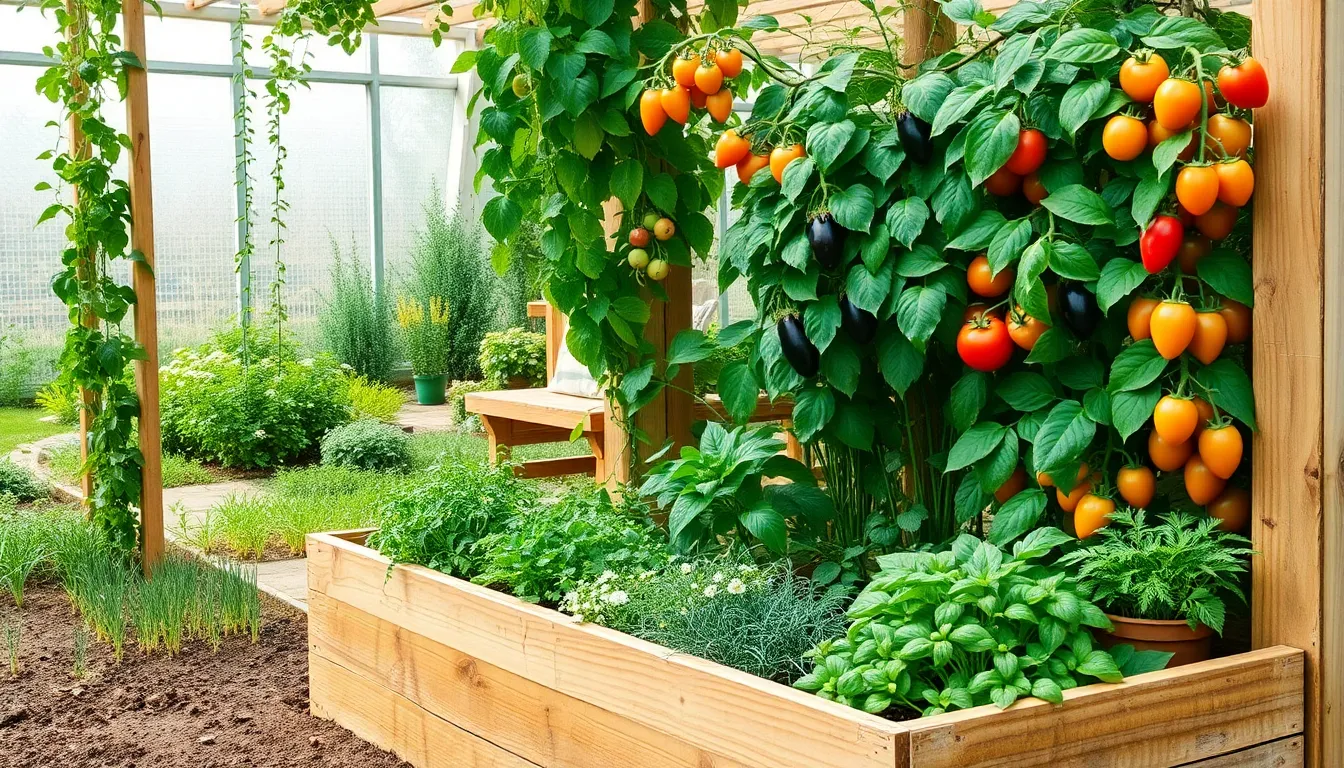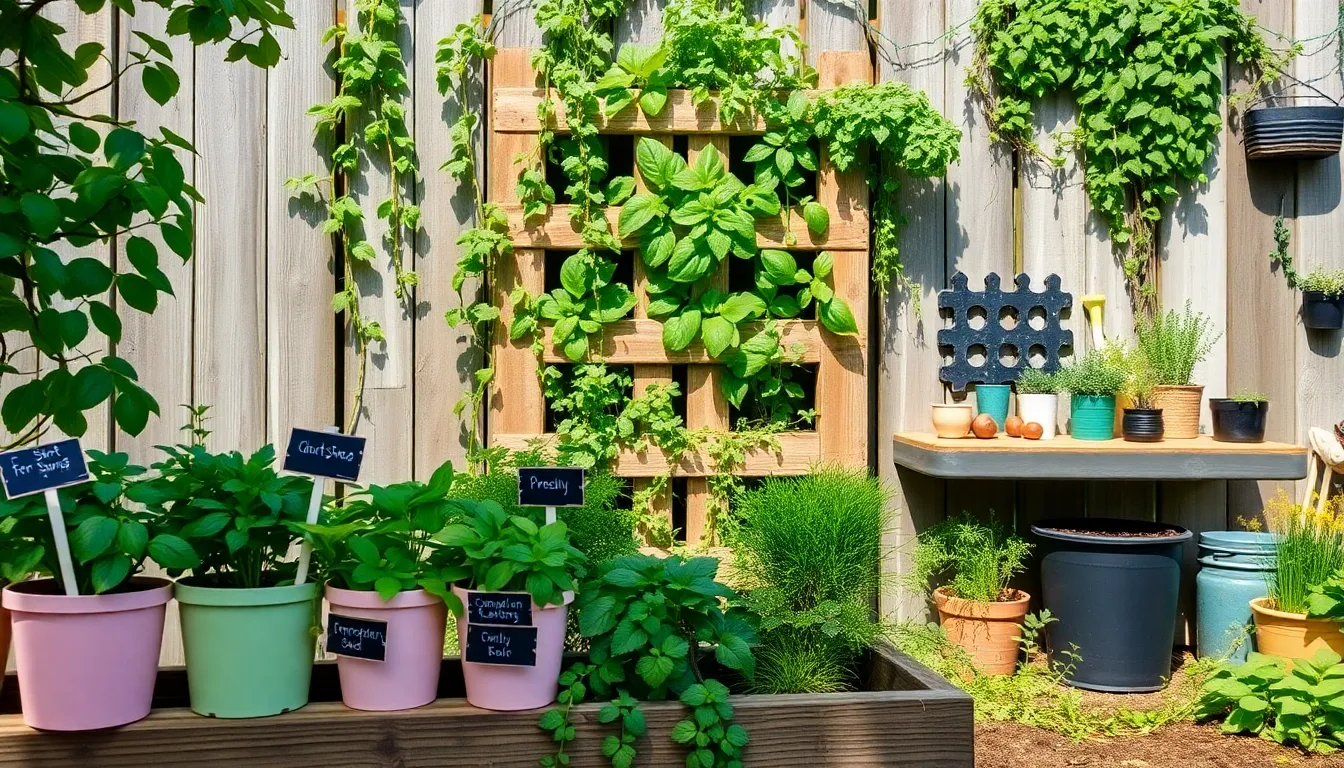Imagine stepping out into your backyard and being greeted by the vibrant colors and fresh scents of your very own fruit garden. Whether you’re a beginner just dipping your toes into the world of homegrown produce or a seasoned gardener looking to expand your green thumb repertoire, creating a fruit garden can be one of the most rewarding experiences. With the right guidance and inspiration, transforming a piece of your outdoor space into a bountiful orchard is more achievable than you might think.
In this article, we’ll explore 15 DIY fruit garden inspirations that cater to various spaces and skill levels, ensuring there’s something for everyone. From container-grown strawberries perfect for balconies to sprawling apple orchards in larger backyards, you’ll find practical ideas that fit any garden size and ambition. Each suggestion is crafted to inspire creativity and provide actionable steps, empowering you to cultivate your own little slice of paradise.
As you embark on this fruitful journey, you’ll learn about the essential tools and techniques needed to nurture your plants from seedlings to harvest. We’ll also share tips on how to maximize your yield and maintain healthy plants throughout the seasons. So, grab your gardening gloves and let’s dive into the world of fruit gardening, where delicious rewards and the joy of nurturing your own plants await.
Choosing Ideal Fruit Varieties
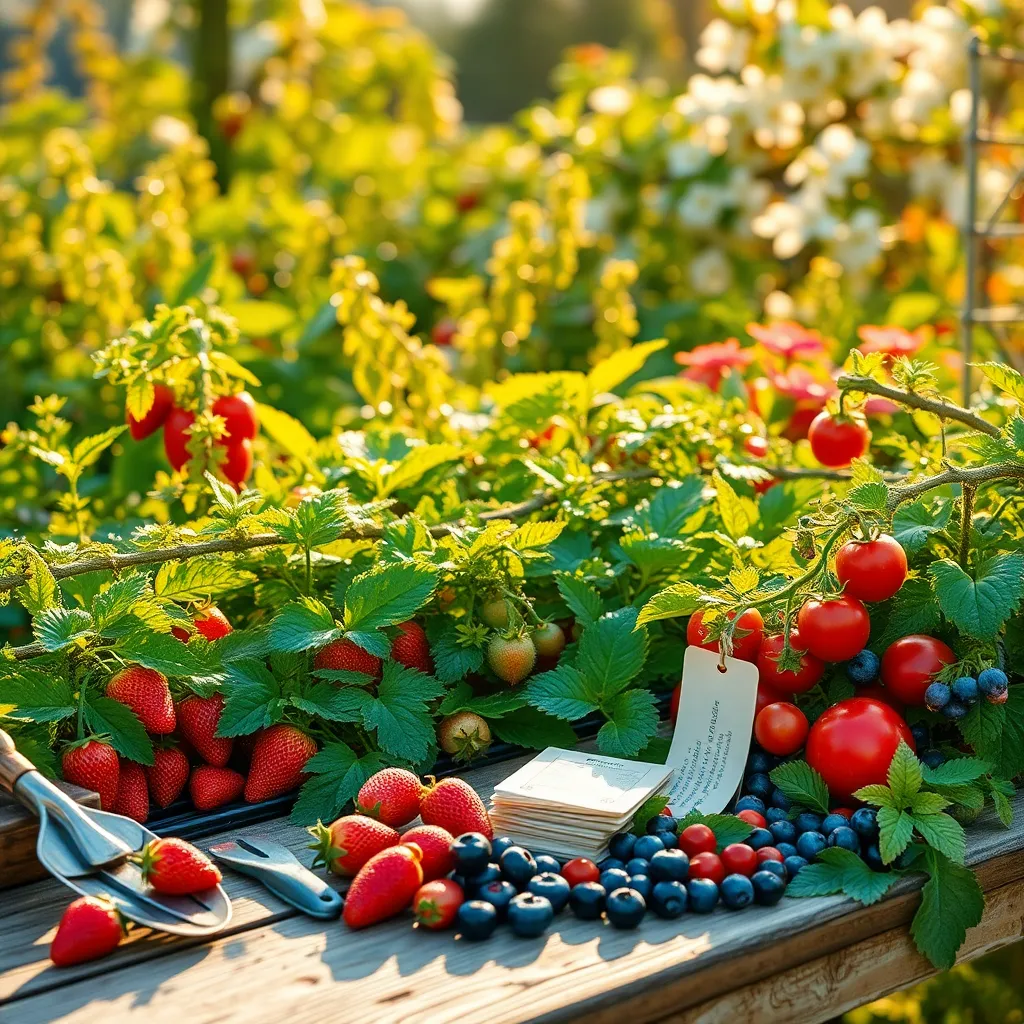
When choosing fruit varieties for your garden, it’s essential to consider your area’s climate and growing conditions. Opt for varieties that are known to thrive in your specific USDA hardiness zone to ensure a successful harvest.
If you’re a beginner, start with fruits that are relatively easy to grow, such as strawberries or blueberries. These fruits typically require well-draining soil and consistent watering, making them manageable for novice gardeners.
For those looking to expand their gardening skills, consider trying your hand at growing dwarf fruit trees, like apples or peaches. These trees not only save space but can also be grown in large containers, allowing you to control soil quality and water retention more effectively.
Advanced gardeners might want to experiment with grafting techniques to grow multiple fruit varieties on a single tree. This method requires careful attention to pruning and soil management but can yield a diverse harvest from a single plant.
Planning Your Garden Layout
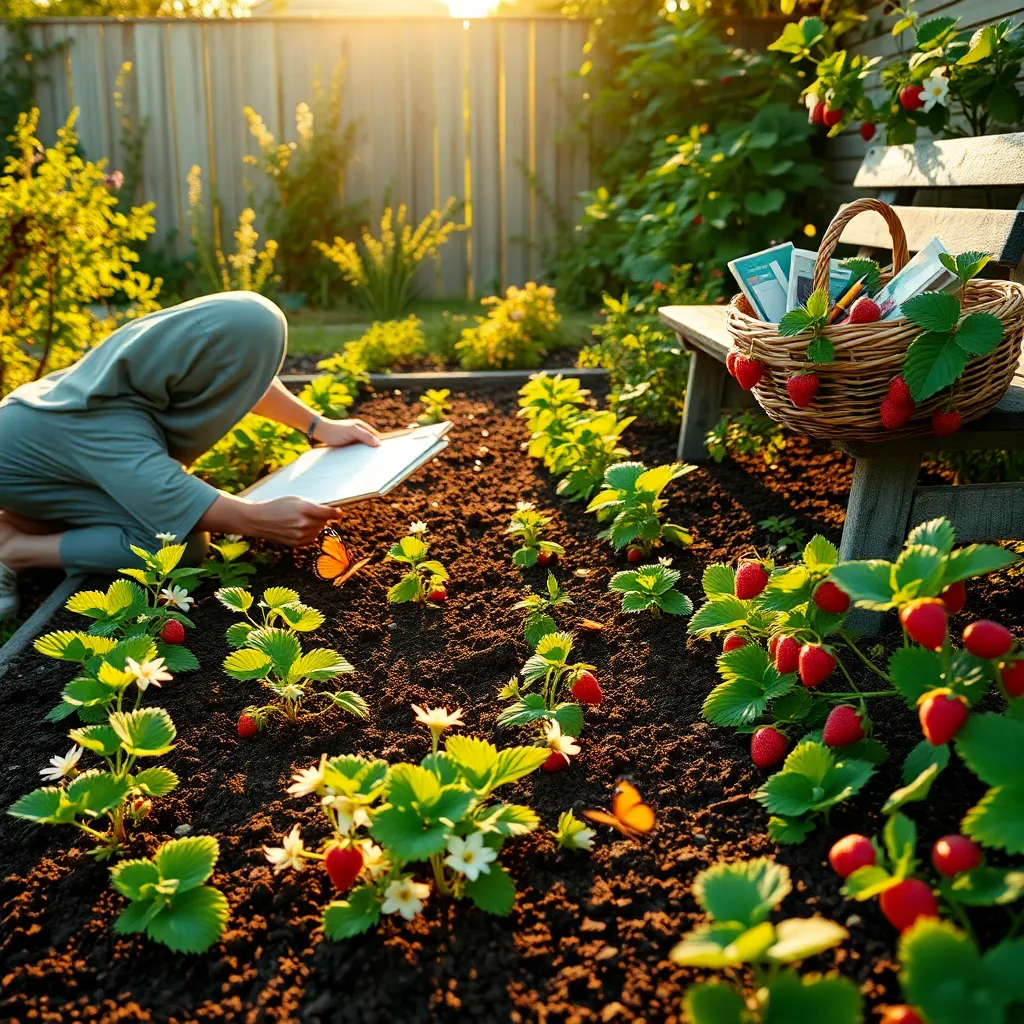
When planning your garden layout, consider the space you have and the types of fruit you want to grow. Start by sketching a rough map of your garden, noting areas of sunlight and shade, as this is crucial for plant placement.
Next, group plants with similar water and sunlight needs together to ensure each plant thrives. For example, berries often prefer full sun and well-drained soil, whereas some fruit trees like partial shade.
Soil quality is essential for a healthy fruit garden, so test your soil’s pH level before planting. Most fruit plants thrive in slightly acidic to neutral soil, with a pH between 6.0 and 7.0.
Use raised beds or containers if your soil quality is poor, as they allow you to control the soil mix more precisely. Consider using a mix of compost, peat moss, and coarse sand for optimal drainage and nutrient availability.
For more experienced gardeners, incorporating companion planting can improve your garden’s productivity and health. Pairing strawberries with borage or planting marigolds near fruit plants can deter pests naturally.
Finally, ensure you leave adequate space for each plant to grow to its full potential. Check the mature size of each plant variety and plan accordingly to avoid overcrowding, which can lead to disease and reduced fruit yield.
Building Raised Garden Beds
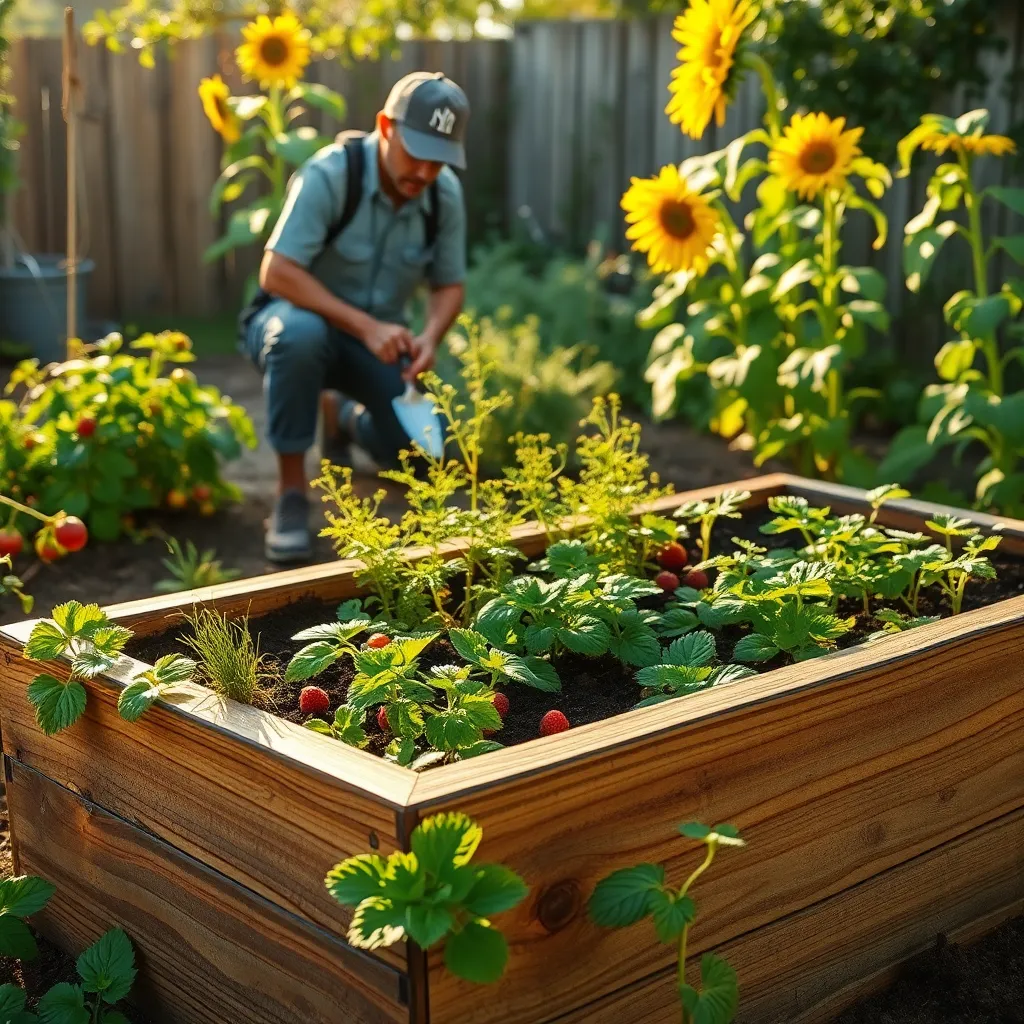
Raised garden beds are a fantastic way to enhance your fruit garden, offering better drainage and soil quality control. To start, choose a sunny location since most fruiting plants require at least six to eight hours of sunlight daily.
Constructing the beds can be done using materials like untreated wood, stone, or recycled bricks. Ensure the bed is deep enough, ideally 12 to 24 inches, to accommodate the root systems of fruit plants such as strawberries or raspberries.
Fill your raised bed with a rich, well-draining soil mix composed of one-third garden soil, one-third compost, and one-third peat moss or coconut coir. This combination provides essential nutrients and retains moisture, crucial for healthy fruit production.
Water your raised beds consistently, aiming to keep the soil evenly moist but not waterlogged. Install a drip irrigation system for efficient watering, particularly in hot climates where evaporation rates are high.
For beginners, start with easy-to-grow fruits like strawberries or blueberries, which thrive in raised beds. Experienced gardeners can try more challenging options like dwarf fruit trees, which may require additional support and pruning.
Protect your raised beds from pests by using row covers or natural deterrents like marigolds, which repel common garden pests. Regularly check for signs of disease or insect damage, and address issues promptly to ensure a bountiful harvest.
Companion Planting for Success
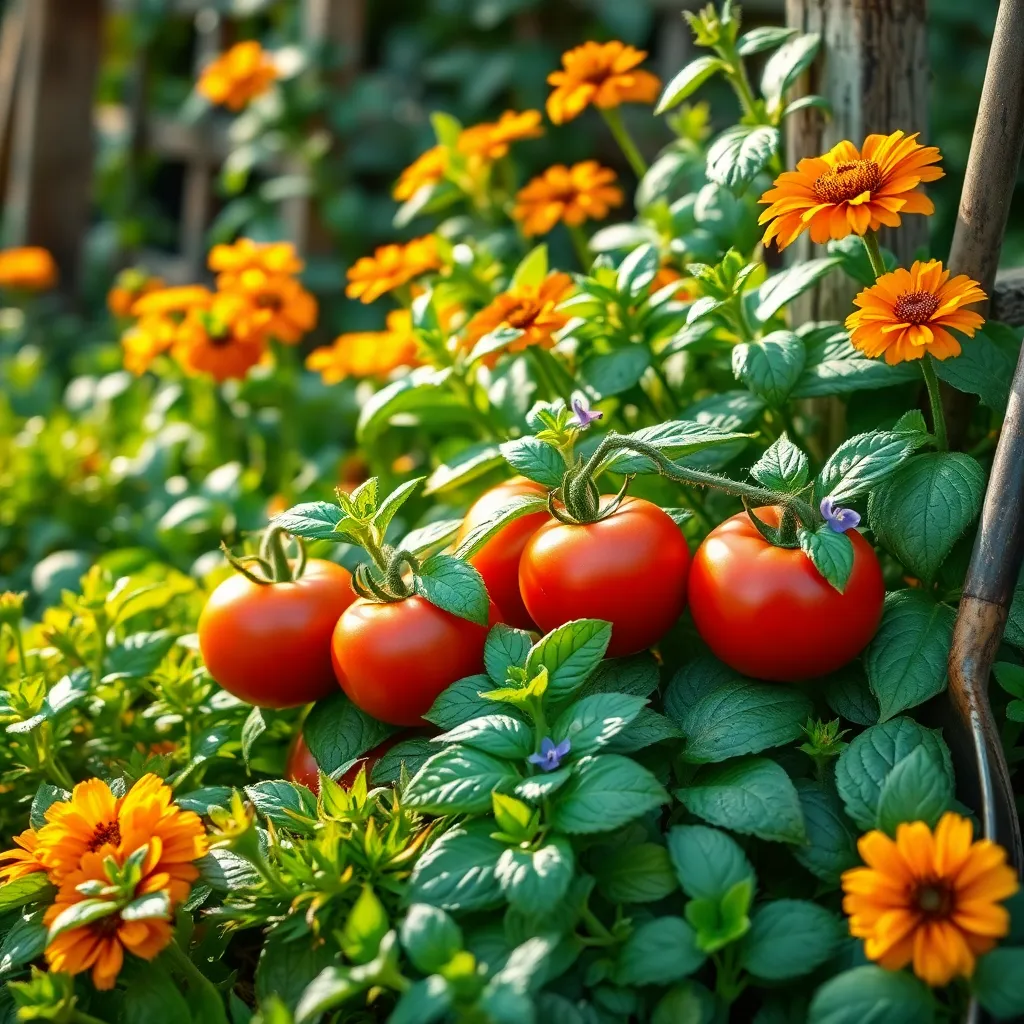
Successful companion planting can significantly enhance the health and yield of your fruit garden. By strategically placing plants with complementary traits, you can naturally repel pests and enhance growth.
Consider pairing strawberries with spinach; they thrive together because spinach can shade the soil, keeping it moist and cool for strawberries. Both plants prefer well-drained, fertile soil, making them perfect companions in your garden.
For an advanced strategy, try growing basil near your tomato plants. Basil not only improves the flavor of tomatoes but also helps repel pests like aphids and whiteflies. Ensure that both plants receive full sun and are watered consistently, as they thrive in similar conditions.
If you’re growing blueberries, plant them alongside thyme to attract beneficial pollinators. Thyme’s aromatic presence can deter pests while inviting bees, which are crucial for blueberry pollination. Both prefer slightly acidic soil, so consider mulching with pine needles to maintain the ideal pH level.
Creating a Vertical Fruit Garden
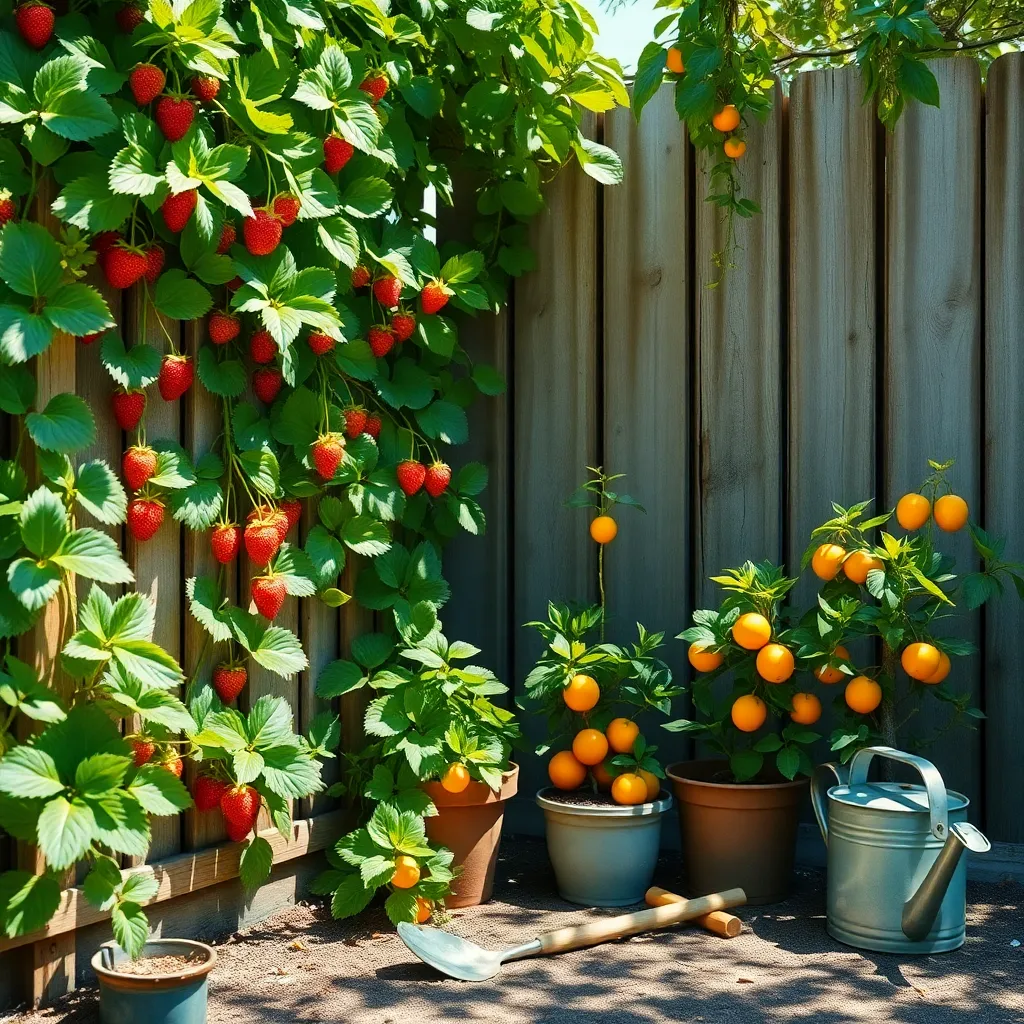
Transforming limited space into a productive area is easy with a vertical fruit garden. This method maximizes space by growing fruit plants upwards, making it ideal for small yards or urban environments.
Start by choosing sturdy support structures like trellises, wall-mounted planters, or vertical towers. These supports should be strong enough to bear the weight of fruit plants such as strawberries, tomatoes, or even small fruit trees like dwarf citrus.
Strawberries are an excellent choice for vertical gardens due to their trailing nature. Plant them in wall-mounted pockets or tiered planters, ensuring they receive at least 6 hours of sunlight daily and are watered consistently to keep the soil moist but not waterlogged.
For more experienced gardeners, consider training vining fruits like grapes or kiwis on a trellis. Ensure these plants have a deep root system by using large pots with well-draining soil, and prune them regularly to maintain shape and encourage fruit production.
- Use a high-quality potting mix to ensure good drainage and aeration.
- Install a drip irrigation system to provide consistent moisture without overwatering.
- Monitor for pests like aphids and spider mites, which can be more common in vertical setups, and use organic methods for control.
DIY Container Gardening Techniques
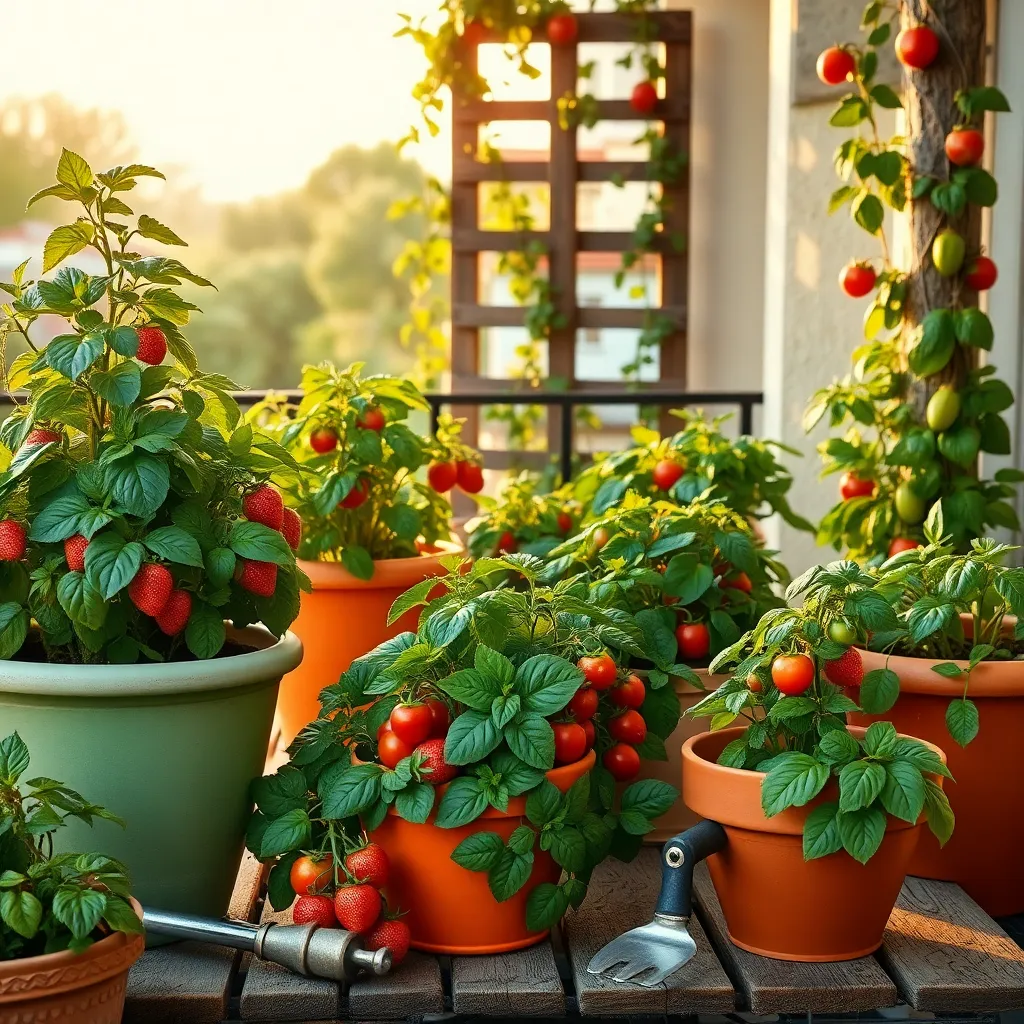
Container gardening offers a versatile way to grow fruit in limited spaces, making it perfect for urban dwellers or those with small backyards. Start by selecting the right containers, ideally at least 12-24 inches deep, to accommodate root systems comfortably.
Begin by choosing the right soil; use a high-quality potting mix that provides good drainage and retains moisture. Add organic matter like compost to enhance nutrient content and promote healthy plant growth.
Watering is crucial for container plants, as soil dries out faster in pots than in the ground. Check soil moisture regularly, aiming to keep it consistently damp but not waterlogged, especially during hot weather.
Consider the sunlight requirements of your chosen fruits; most need full sun, which means at least six hours of direct sunlight daily. Rotate the containers periodically to ensure even sun exposure and prevent plants from leaning towards the light.
For those with more experience, experiment with companion planting to maximize space and increase yields. Pair compatible plants, such as strawberries with herbs like basil, to create a symbiotic environment that benefits both.
Organic Pest Control Methods
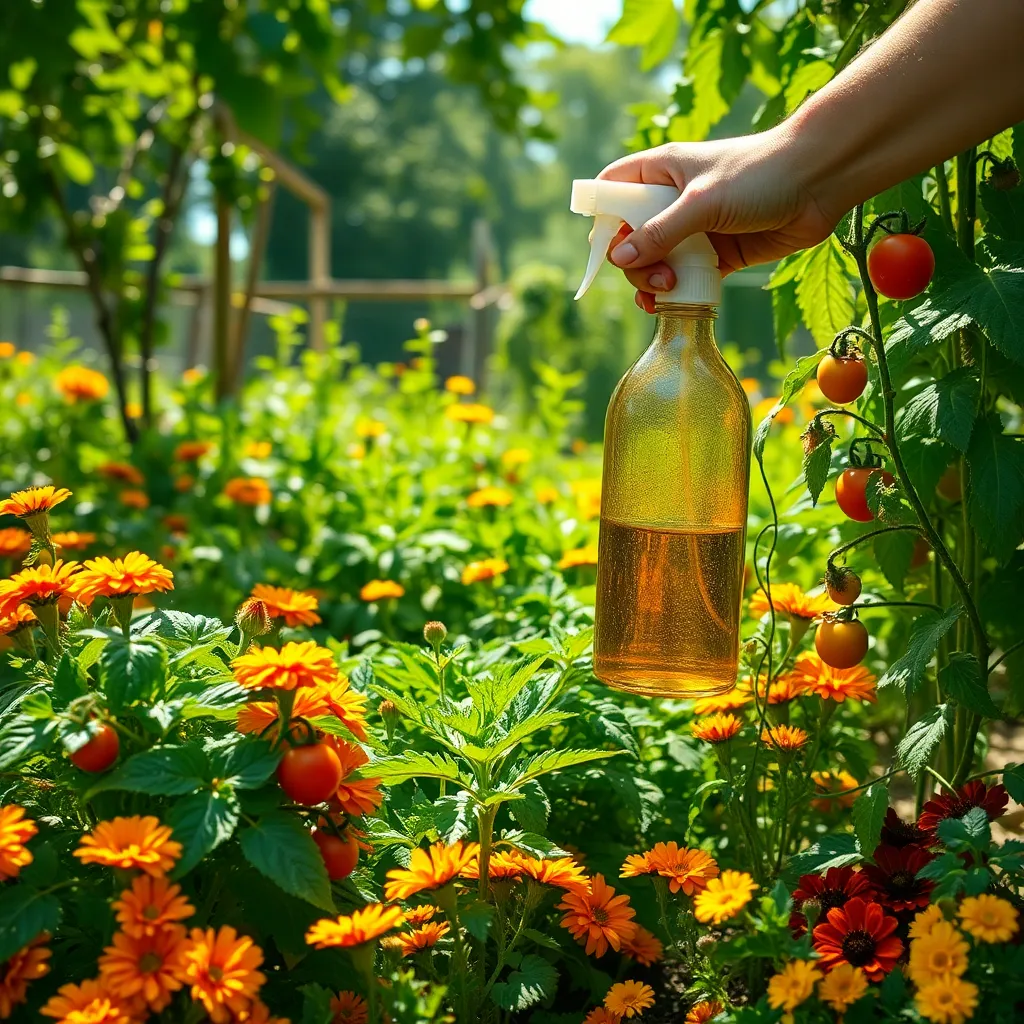
Organic pest control is a sustainable way to protect your fruit garden while maintaining an eco-friendly environment. Start by encouraging beneficial insects, such as ladybugs and lacewings, which naturally prey on common garden pests.
Consider introducing companion planting to deter pests organically. For example, planting marigolds near your fruit plants can help repel nematodes and aphids, reducing the need for chemical interventions.
Another effective method is using homemade sprays, such as a mixture of water and neem oil. This natural pesticide can be applied directly onto plants to manage pests like aphids and spider mites without harming beneficial insects.
For more persistent pest problems, try creating a garlic or chili pepper spray. These potent mixtures can deter a variety of insects, ensuring your fruit garden remains healthy and productive throughout the growing season.
Compost and Mulch Essentials
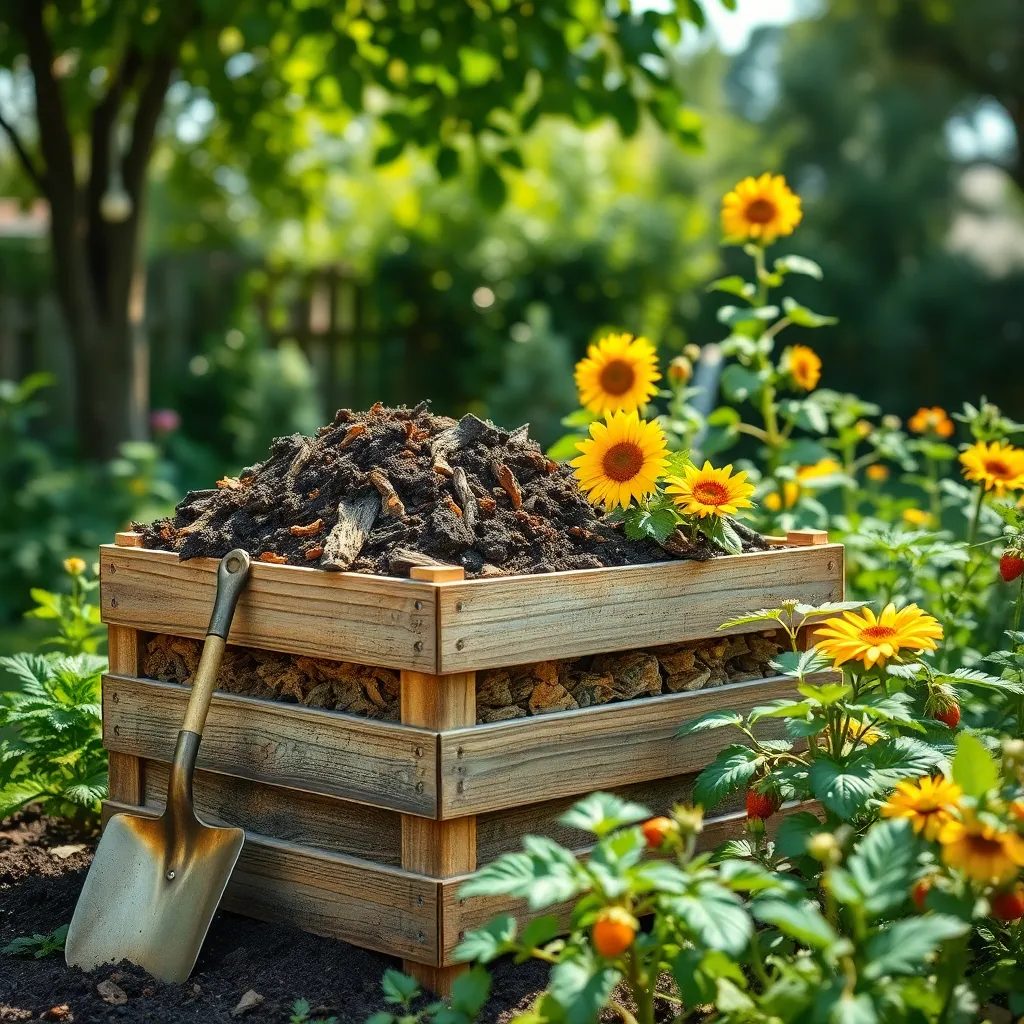
Compost and mulch are essential components of a thriving fruit garden, providing both nutrients and protection to your plants. Compost enriches the soil, improving its structure and boosting its ability to retain moisture, which is crucial for healthy fruit growth.
To create your own compost, combine green materials like vegetable scraps with brown materials such as dried leaves. Turn the pile weekly to ensure proper aeration and speed up the decomposition process, resulting in rich, crumbly compost ready to nourish your garden.
Mulching serves as a protective blanket over your soil, helping to regulate temperature and suppress weeds. Organic options like straw or wood chips are excellent for fruit gardens as they decompose over time, adding nutrients back into the soil.
When applying mulch, spread a layer about 2-3 inches thick around your fruit plants, making sure to keep it away from direct contact with stems to prevent rot. This practice not only conserves moisture but also reduces the need for frequent watering, making it a practical choice for busy gardeners.
For those looking to take their gardening a step further, consider using mulches like cocoa hulls or pine needles for specific plants that prefer more acidic conditions. Remember, both composting and mulching are simple yet powerful techniques that can transform your fruit garden into a more productive and sustainable space.
Efficient Drip Irrigation Systems
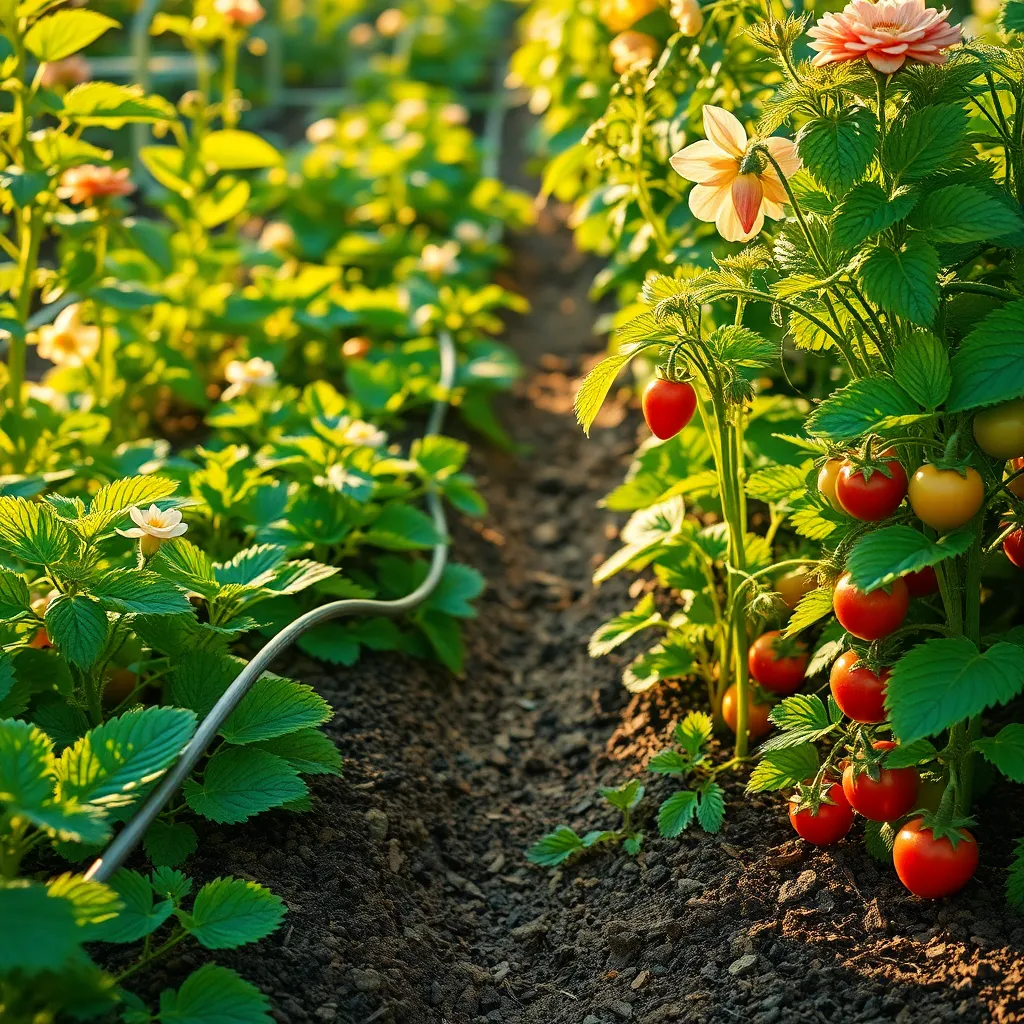
To optimize your fruit garden’s watering efficiency, consider installing a drip irrigation system. These systems deliver water directly to the plant roots, reducing water waste and promoting healthier growth.
Start by assessing the layout of your fruit garden to determine the best placement for your drip lines. It’s crucial to position emitters so that each fruit plant receives adequate moisture without oversaturating the soil.
For beginners, a basic kit with adjustable emitters and a timer is an excellent choice. This setup allows you to control the watering schedule, ensuring that your plants receive consistent hydration even during dry spells.
Experienced gardeners might explore customizable systems that include pressure regulators and filters for enhanced performance. These components help maintain the system’s efficiency and prolong its lifespan by preventing clogs and leaks.
Regular maintenance is key to keeping your drip irrigation system running smoothly. Check for blockages and leaks periodically, and adjust emitters as plants grow to ensure continued optimal water delivery.
DIY Trellises for Climbing Fruits
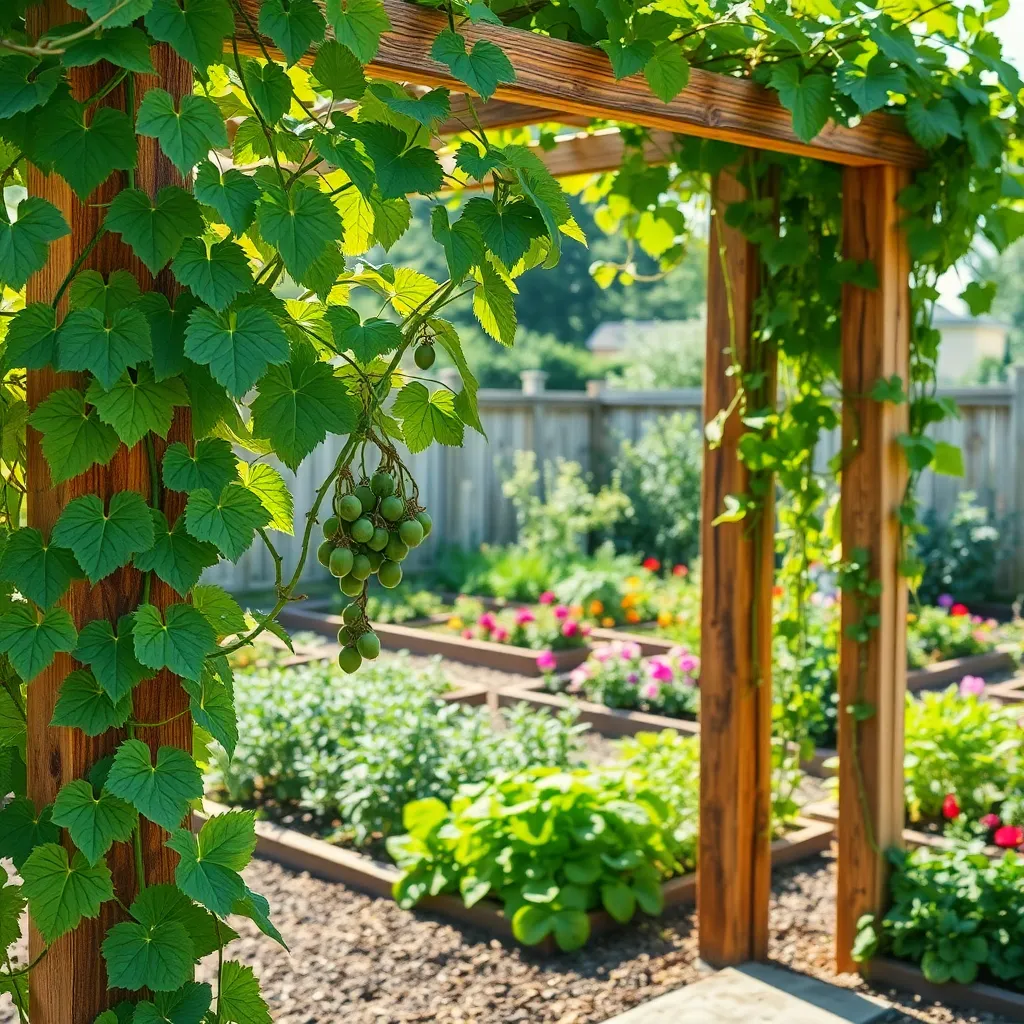
Creating a DIY trellis for climbing fruits is a rewarding project that can significantly enhance your garden’s productivity. By using materials like wood, bamboo, or metal, you can construct a sturdy framework that supports the vertical growth of plants such as cucumbers, melons, and grapes.
Choose a location with full sunlight and well-drained soil to ensure your climbing fruits thrive. Before installation, make sure the soil is enriched with organic matter, such as compost or well-rotted manure, to provide nutrients for robust growth.
Once your trellis is in place, secure the plants to the structure using soft ties or twine to avoid damaging stems. Regularly check the growth and gently weave new tendrils through the trellis to guide them upward, which encourages more fruit production.
For beginners, a simple A-frame or teepee trellis can be constructed with minimal tools and expertise. Advanced gardeners might opt for more complex designs, like an espalier system, which involves training plants along horizontal wires to maximize space efficiency.
Remember to water your climbing fruits consistently, ensuring the soil remains moist but not waterlogged. Employing mulch around the base of your plants can help retain moisture and control weeds, creating an ideal growing environment.
Maximizing Sunlight and Shade
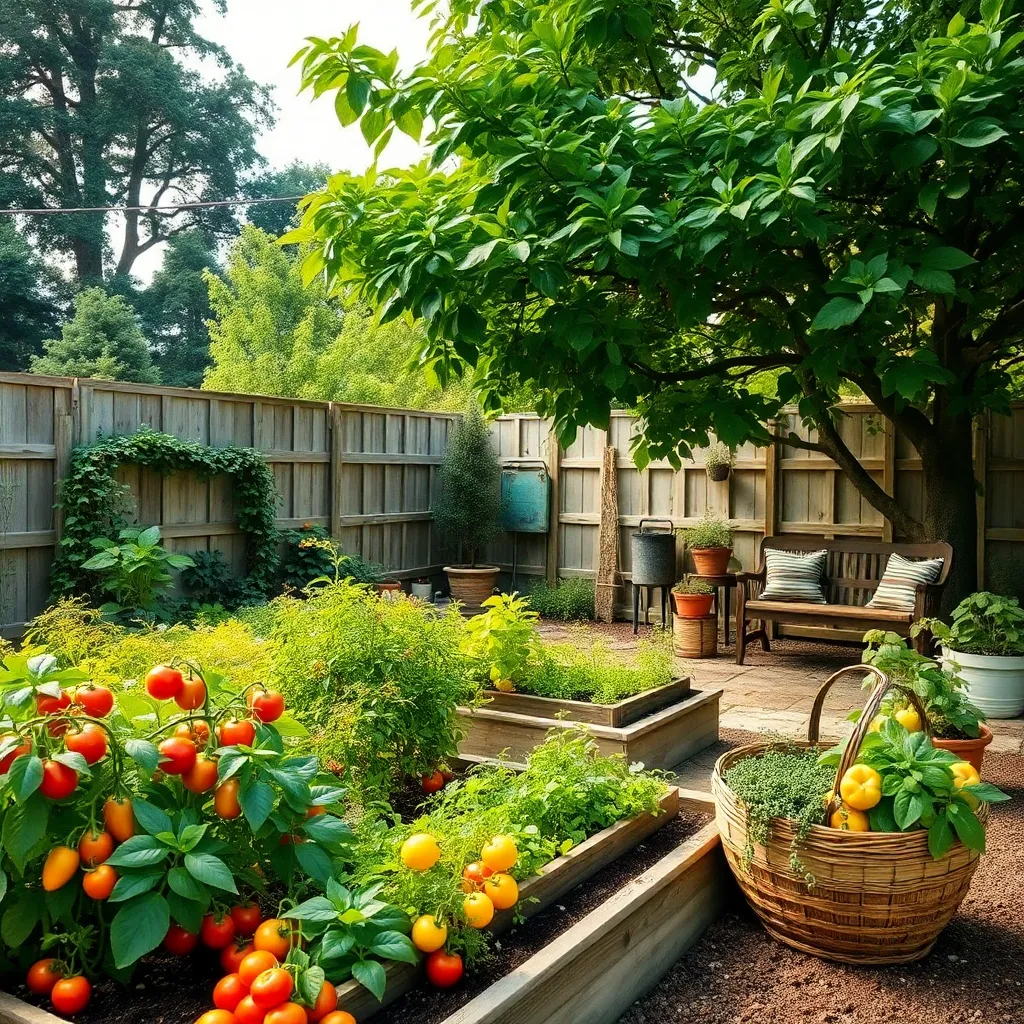
Understanding how to maximize sunlight and shade can significantly impact the success of your fruit garden. Begin by observing your garden throughout the day to determine which areas receive the most direct sunlight and which are shaded.
For sun-loving fruits like tomatoes and strawberries, aim to position them in spots that receive at least six to eight hours of sunlight per day. If your garden space is limited or shaded, consider using reflective surfaces like white stone or mirrors to direct more light onto your plants.
On the other hand, some fruits such as raspberries and currants thrive better with partial shade, especially during the hottest parts of the day. To create the perfect balance, consider planting these fruits near taller plants or structures that naturally provide shade.
Experiment with planting in raised beds if your soil is heavy clay, as they offer improved drainage and can warm up faster in the spring. Additionally, using a quality mulch can help maintain soil moisture and temperature, which is beneficial for fruit plants sensitive to extreme sun exposure or dry conditions.
Seasonal Planting and Harvesting

Understanding the importance of seasonal planting and harvesting is crucial for a thriving fruit garden. Begin by researching the optimal planting times for your chosen fruit varieties, as this will significantly impact their growth and yield.
Spring is often the best time to plant many fruit-bearing plants like berries and citrus, which thrive in warming soil. Ensure you prepare your soil by enriching it with compost or well-rotted manure to provide necessary nutrients.
Summer months require vigilance in watering, as warmer temperatures can quickly dry out the soil. Mulching around your plants helps retain moisture, keeping roots cool and reducing weed competition.
As autumn approaches, it’s time to focus on harvesting and preparing your garden for the next cycle. Use this time to prune fruit trees and bushes, which encourages new growth and prepares them for a productive next season.
For advanced gardeners, consider employing succession planting techniques to maintain a continuous harvest. This involves planting new seeds or seedlings at regular intervals, ensuring a steady supply of fresh produce throughout the growing season.
Pruning and Training Fruit Trees
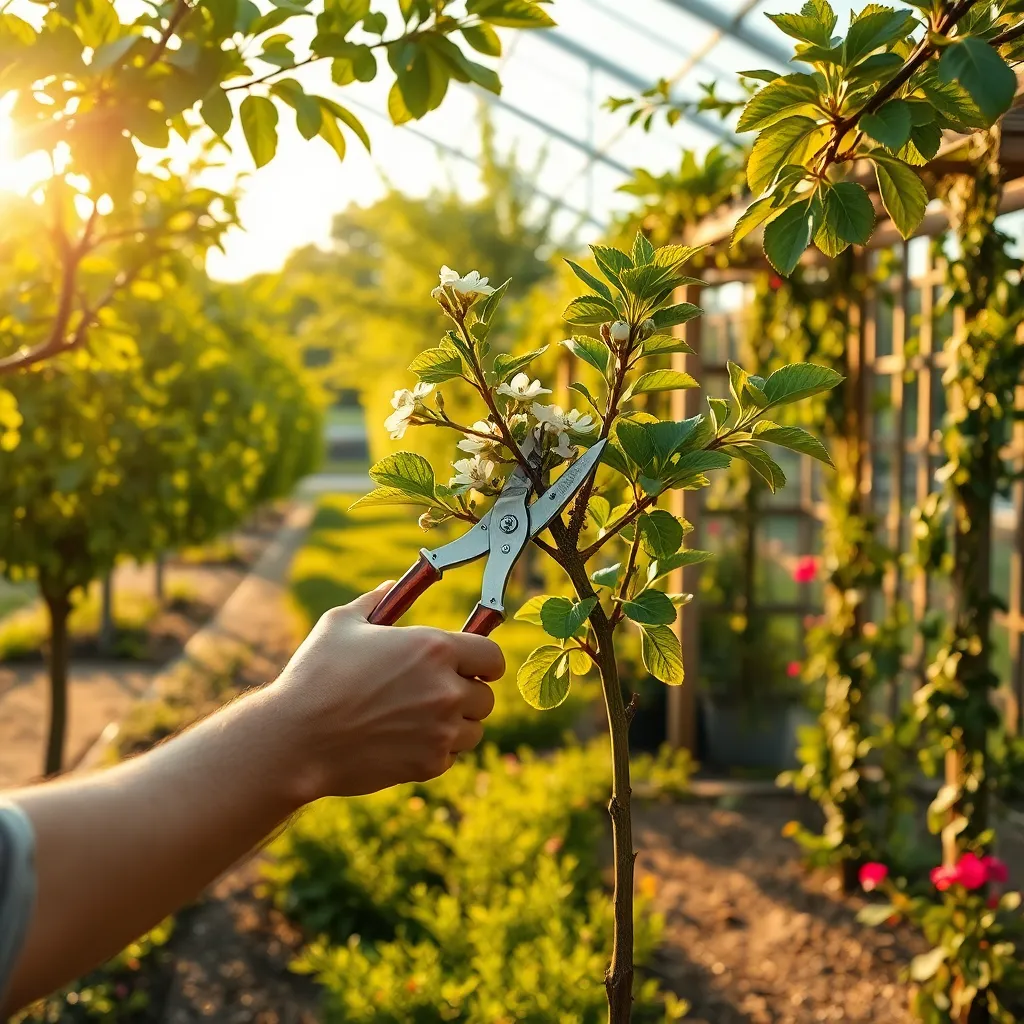
Pruning is essential for the health and productivity of your fruit trees. It helps control the size of the tree, making it easier to harvest and maintain.
For beginners, start by removing any dead, diseased, or crossing branches to encourage healthy growth. Use sharp, clean tools to make precise cuts, which will help the tree heal more quickly.
Advanced gardeners can focus on thinning cuts to open the canopy, allowing more sunlight and air circulation. This not only improves fruit quality but also reduces the risk of fungal diseases.
Training young trees is crucial to establish a strong framework. Consider using the central leader or open center systems, depending on the type of fruit and your specific garden setup.
Regularly check the growth of your trees and adjust training supports as needed. This will ensure that branches develop correctly, preventing future structural problems.
Remember, the best time for pruning is during the dormant season, usually late winter or early spring. However, summer pruning can help manage overly vigorous trees by restricting growth.
Innovative Small Space Solutions
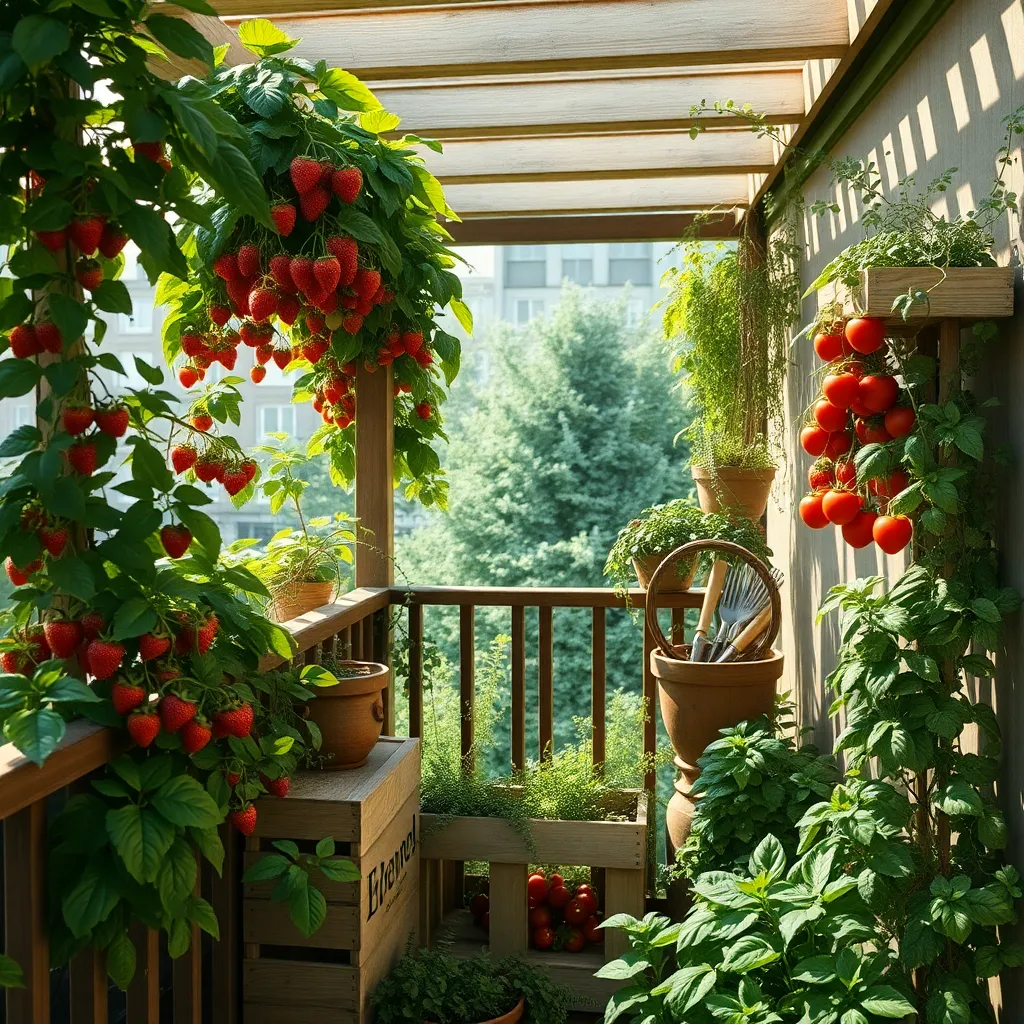
Maximizing small spaces for fruit gardening requires creativity and smart planning. Vertical gardening is an excellent option, allowing you to grow fruit like strawberries or dwarf fruit trees in multi-tiered planters or using trellises.
Consider utilizing containers and pots to grow fruits like blueberries and lemons, which thrive in well-drained soil. Ensure you use a high-quality potting mix and water regularly, especially during dry spells, to keep the plants healthy.
Hanging baskets are not just for flowers; they can be a perfect solution for growing small fruits such as cherry tomatoes and strawberries. Make sure to choose a sunny location for hanging baskets and water them frequently, as they tend to dry out faster than ground-planted options.
Advanced gardeners can explore the technique of espalier, which involves training fruit trees to grow flat against a wall or fence. This method saves space and can create a stunning visual effect, but it does require regular pruning and careful attention to plant health.
Sustainable Gardening Practices
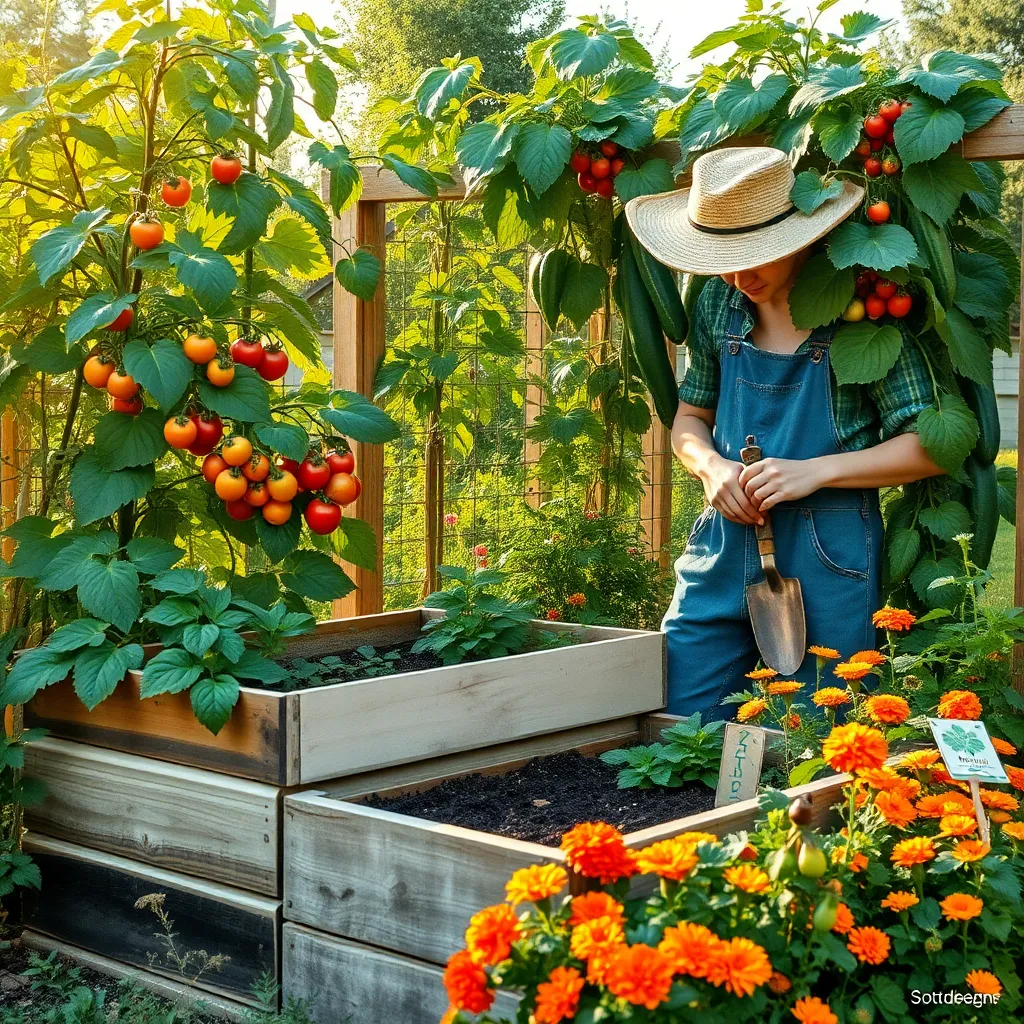
Sustainable gardening practices not only benefit the environment but also improve the health of your fruit garden. Start by incorporating **composting** to enrich your soil with natural nutrients, reducing the need for chemical fertilizers.
Consider using **rainwater collection systems** to efficiently water your garden. This simple step conserves water and provides your plants with chemical-free hydration, which is especially beneficial for sensitive fruit crops.
To control pests naturally, introduce **beneficial insects** like ladybugs and lacewings into your garden. These insects help manage pest populations without the need for harmful pesticides, creating a balanced ecosystem.
Implementing **crop rotation** can minimize soil depletion and reduce pest and disease buildup. Rotate your fruit crops annually, ensuring each type of plant gets a chance to thrive in different soil conditions.
Conclusion: Growing Success with These Plants
In exploring ’15 DIY Fruit Garden Inspirations,’ we delved into creative ways to nurture your relationship by comparing it to a vibrant garden. We covered key concepts such as the importance of nourishing communication, planting seeds of trust, cultivating patience, and reaping the rewards of shared goals. We also discussed the benefits of regular nurturing, the beauty of diversity in relationships, and the power of teamwork. Each of these elements plays a crucial role in maintaining a thriving partnership.
As an immediate step, choose one concept that resonates with you and your partner. Whether it’s setting aside time for deeper communication or celebrating small victories together, start implementing it today. By taking this small action, you’re investing in the growth of your relationship.
Remember to save or bookmark this article for future reference, as it contains invaluable insights that can be revisited whenever your relationship needs a little tending. Looking ahead, by continuously applying these gardening principles, you’ll create a relationship that not only withstands the test of time but also flourishes with resilience and joy. Embrace these inspirations with warmth and watch your relationship blossom into its full potential.

